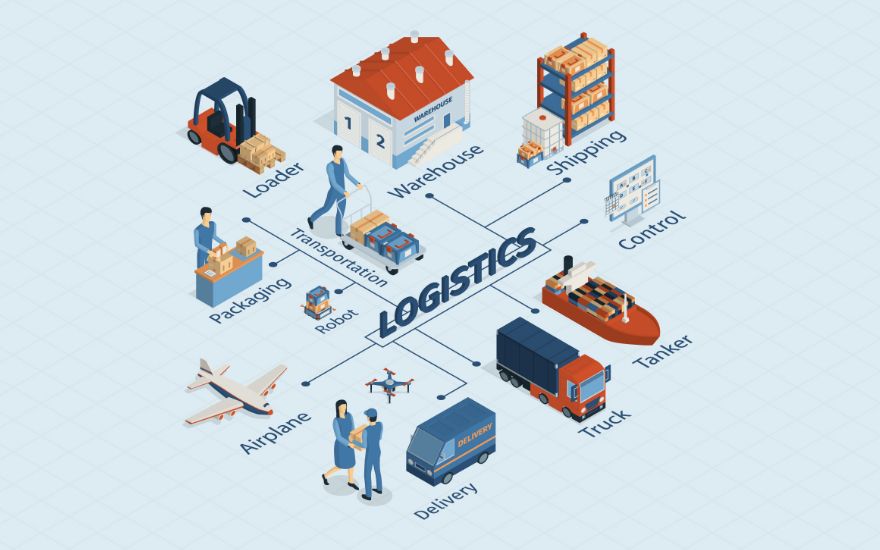Safety and compliance in Logistics
Safety Compliance Logistics Best Practices: In today’s rapidly evolving logistics industry, ensuring safety and compliance is paramount. The seamless movement of goods across various regions and countries demands strict adherence to safety protocols and regulatory standards. Without these measures, the risk of accidents, legal repercussions, and operational disruptions increases significantly. This article delves into the best practices for maintaining high standards of safety and compliance in logistics, offering insights that are vital for any logistics company aiming for excellence.
Safety Compliance Logistics Best Practices
Safety and compliance in logistics refer to the adherence to established standards and regulations designed to protect the health and safety of workers, the public, and the environment. These standards are set by various international, national, and local bodies to ensure that logistics operations are conducted safely and responsibly.
Regulatory Frameworks in Logistics
The logistics industry is governed by a complex web of regulations. These include international agreements such as the International Maritime Organization (IMO) standards, national regulations like the U.S. Department of Transportation (DOT) rules, and local ordinances. Compliance with these regulations is essential to avoid legal penalties and ensure the safe handling of goods.
Common Safety Risks in Logistics
Logistics operations are fraught with potential hazards, from vehicular accidents and slips and falls in warehouses to the mishandling of hazardous materials. Identifying these risks is the first step in mitigating them. Implementing comprehensive risk assessment procedures can help logistics companies proactively address potential safety issues.
Compliance Standards and Certifications
Achieving compliance often involves adhering to established standards and obtaining relevant certifications. ISO 9001 for quality management, ISO 14001 for environmental management, and ISO 45001 for occupational health and safety management are just a few examples. Additionally, guidelines from the Occupational Safety and Health Administration (OSHA) play a crucial role in shaping safety protocols.
Developing a Safety Culture
Fostering a culture of safety within an organization begins with leadership. Leaders must prioritize safety and demonstrate a commitment to it through their actions and decisions. Employee engagement is also critical; when employees feel responsible for their safety and that of their colleagues, they are more likely to adhere to safety protocols and report potential hazards.
Training and Education Programs
Effective training programs are essential for educating employees about safety and compliance. These programs should cover a wide range of topics, including proper handling of equipment, emergency procedures, and the importance of reporting incidents. Regular refresher courses can ensure that employees stay updated on the latest safety practices.
Safety Audits and Inspections
Regular safety audits and inspections are vital tools for maintaining compliance. These assessments help identify potential safety hazards and ensure that corrective actions are taken promptly. A robust audit program can also demonstrate a company’s commitment to safety to regulatory bodies and customers alike.
Technology and Safety in Logistics
Technology plays a pivotal role in enhancing safety and compliance. Innovations such as GPS tracking, automated warehousing systems, and real-time monitoring can significantly reduce the risk of accidents and improve operational efficiency. Moreover, data analytics can help identify trends and areas for improvement in safety practices.
Incident Reporting and Response
A well-defined incident reporting and response system is crucial for effective safety management. Employees should be encouraged to report all incidents, no matter how minor, and a clear process should be in place for investigating these reports and implementing corrective measures.
Emergency Preparedness
Preparing for emergencies involves developing and regularly updating emergency response plans. These plans should address various scenarios, including natural disasters, fires, and hazardous material spills. Regular drills can ensure that employees know how to respond effectively in an emergency.
Fleet Safety Management
Fleet safety is a significant concern in logistics. Ensuring the safety of vehicles and drivers involves regular vehicle maintenance, driver training programs, and monitoring driving behavior. Technologies such as telematics can provide valuable insights into fleet operations and help enhance safety.
Warehouse Safety Protocols
Maintaining safe warehouse environments requires strict adherence to safety protocols. This includes proper storage of goods, regular maintenance of equipment, and ensuring that aisles and exits are kept clear. Additionally, training employees on safe lifting techniques and the proper use of personal protective equipment (PPE) can prevent injuries.
Handling Hazardous Materials
Handling hazardous materials requires specialized training and strict adherence to regulations. Proper labeling, storage, and transportation procedures are essential to prevent accidents and ensure the safety of workers and the environment.
Supply Chain Security
Supply chain security involves protecting the supply chain from various threats, including theft, cyber-attacks, and natural disasters. Implementing robust security measures, such as secure access controls and regular security audits, can help mitigate these risks.
Case Studies
Examining real-world examples of successful safety and compliance strategies can provide valuable insights. Case studies from leading logistics companies can highlight best practices and innovative approaches to safety and compliance.
Ethical Considerations in Logistics
Balancing efficiency with ethical practices is a significant challenge in logistics. Ensuring fair labor practices, minimizing environmental impact, and maintaining transparency with stakeholders are all essential components of an ethical logistics operation.
Environmental Compliance
Sustainability is becoming increasingly important in logistics. Compliance with environmental regulations, such as those governing emissions and waste disposal, is crucial for minimizing the environmental impact of logistics operations.
Risk Management Strategies
Effective risk management involves identifying, assessing, and mitigating risks. Developing a comprehensive risk management plan can help logistics companies anticipate potential issues and implement strategies to address them.
Health and Safety at Work Act
Understanding the Health and Safety at Work Act and its implications is essential for logistics companies operating in jurisdictions where this legislation applies. This act outlines the responsibilities of employers and employees in maintaining a safe work environment.
Legal Implications of Non-Compliance
Failing to meet safety and compliance standards can have severe legal consequences, including fines, lawsuits, and damage to a company’s reputation. Understanding these implications can underscore the importance of maintaining high standards of safety and compliance.
Continuous Improvement in Safety
Safety and compliance should be viewed as ongoing processes. Regularly reviewing and updating safety protocols, incorporating feedback from employees, and staying informed about industry developments can help logistics companies continuously improve their safety practices.
Safety Performance Metrics
Measuring and analyzing safety performance is essential for identifying areas for improvement. Key metrics might include the number of accidents, incident response times, and employee training completion rates.
Collaboration with Third Parties
Ensuring safety and compliance in partnerships with third-party logistics providers requires clear communication and shared standards. Regular audits and performance reviews can help maintain these standards.


